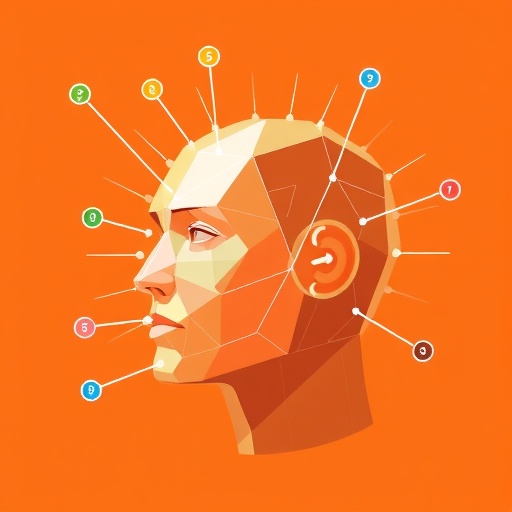In a groundbreaking leap for the field of medical diagnostics and artificial intelligence, Harvard Medical School has developed a novel AI system called Dr. CaBot. This advanced technology stands out for its ability to articulate its reasoning processes while diagnosing complex medical cases, a significant departure from existing AI diagnostic tools which often provide little insight into their decision-making mechanisms. Dr. CaBot aims not just to deliver accurate diagnoses but also to mimic the storytelling and presentation skills of expert physicians, thereby enhancing understanding and education in medical contexts.
The system operates by generating a comprehensive differential diagnosis. This means that Dr. CaBot considers a range of possible conditions based on the patient’s symptoms and test results, then systematically narrows down this list to arrive at a definitive diagnosis. Such a method closely resembles the cognitive processes of seasoned medical professionals who meticulously analyze cases before concluding their findings. Dr. CaBot’s ability to share its thought processes effectively positions it as an invaluable educational tool for medical students and professionals alike.
In an unprecedented move, The New England Journal of Medicine has published an AI-generated diagnosis from Dr. CaBot alongside a diagnosis rendered by a human doctor in its renowned medical case study series. This collaboration represents a milestone not just for the researchers involved but for the entire field of medical AI. As the journal itself has been a historical platform for publishing some of the most challenging medical cases since 1923, the inclusion of an AI-generated diagnosis indicates a turning point in how AI technology can assist human clinicians and influence medical education.
The development of Dr. CaBot is rooted in the concept of clinicopathological conferences (CPCs), which date back to the late 19th century. These gatherings allow doctors to present complex cases and share their diagnostic reasoning with peers. The tradition was formalized by Dr. Richard Cabot, after whom Dr. CaBot is named, and has been a cornerstone of medical education at Massachusetts General Hospital. The aim was clear: improve diagnostic skills among physicians in training by dissecting real cases thoroughly until clarity and understanding are achieved. Dr. CaBot encapsulates this spirit of inquiry and education, taking it a step further by integrating artificial intelligence into the mix.
The narrative structure of Dr. CaBot’s presentations is particularly remarkable. Each case is rendered into a five-minute, slide-based video format that simulates a lifelike presentation, including common conversational fillers and colloquial expressions. This not only improves engagement but also helps demystify the diagnostic process for trainees and practitioners. The use of relatable language is essential for fostering a deeper understanding of the complexities involved in medical reasoning.
Moreover, the AI system’s design allows it to access an extensive repository of clinical data. This includes millions of abstracts from leading medical journals, enhancing its ability to substantiate its reasoning with real-world examples and current research. The capacity to pull from this wealth of information is critical, especially as practitioners contend with a deluge of medical literature in their everyday work. By efficiently summarizing and presenting relevant studies, Dr. CaBot serves as a powerful research aid in addition to its educational utility.
As it stands, Dr. CaBot is still under development and not yet suited for clinical deployment. However, a series of demonstrations at hospitals in the Boston area have shown promising results. Physicians have already expressed interest in the tool’s capabilities, indicating a readiness to embrace AI in their diagnostic practices. The hope is that ongoing feedback from these demonstrations will refine the system further, ultimately leading to a robust AI tool that complements human expertise in clinical settings.
The publication in The New England Journal of Medicine represents a crucial step for Dr. CaBot, offering the AI a platform to demonstrate its abilities against a seasoned expert’s diagnostic strategies. The case highlighted in the journal—a 36-year-old man suffering from abdominal pain, fever, and hypoxemia—showcases the strengths and limitations of the system. Such comparisons are essential for validating AI in clinical diagnostics. They provide insight into how AI reasoning aligns with that of experienced clinicians, shedding light on areas where it excels or falters, fostering a collaborative environment between human and machine intelligence.
As healthcare organizations worldwide grapple with a growing demand for efficiency and accuracy, tools like Dr. CaBot highlight the need for a balanced approach to AI integration in clinical settings. While the advantages of AI systems are significant—such as their availability, capacity for persistence, and ability to process vast amounts of data—they also come with caveats that must be addressed. The research team is actively working on incorporating features to enhance patient privacy, ensuring that any future deployment aligns with ethical standards of medical practice.
In conclusion, Dr. CaBot represents a transformative advancement in the intersection of artificial intelligence and healthcare. With its sophisticated reasoning and extensive data retrieval capabilities, it offers a vision for a future where AI assists in medical education and diagnostics, ultimately improving patient outcomes and streamlining healthcare processes. Continuous feedback from the medical community, alongside rigorous testing and validation, will be pivotal as the development of Dr. CaBot progresses, paving the way for potentially significant applications in real-world medical scenarios.
Subject of Research: AI in medical diagnostics
Article Title: Case 28-2025: A 36-Year-Old Man with Abdominal Pain, Fever, and Hypoxemia
News Publication Date: 8-Oct-2025
Web References: New England Journal of Medicine
References: Not applicable
Image Credits: Credit: Manrai lab
Keywords
Artificial intelligence, medical diagnostics, Harvard Medical School, Dr. CaBot, The New England Journal of Medicine, education, clinicopathological conferences, healthcare technology.




